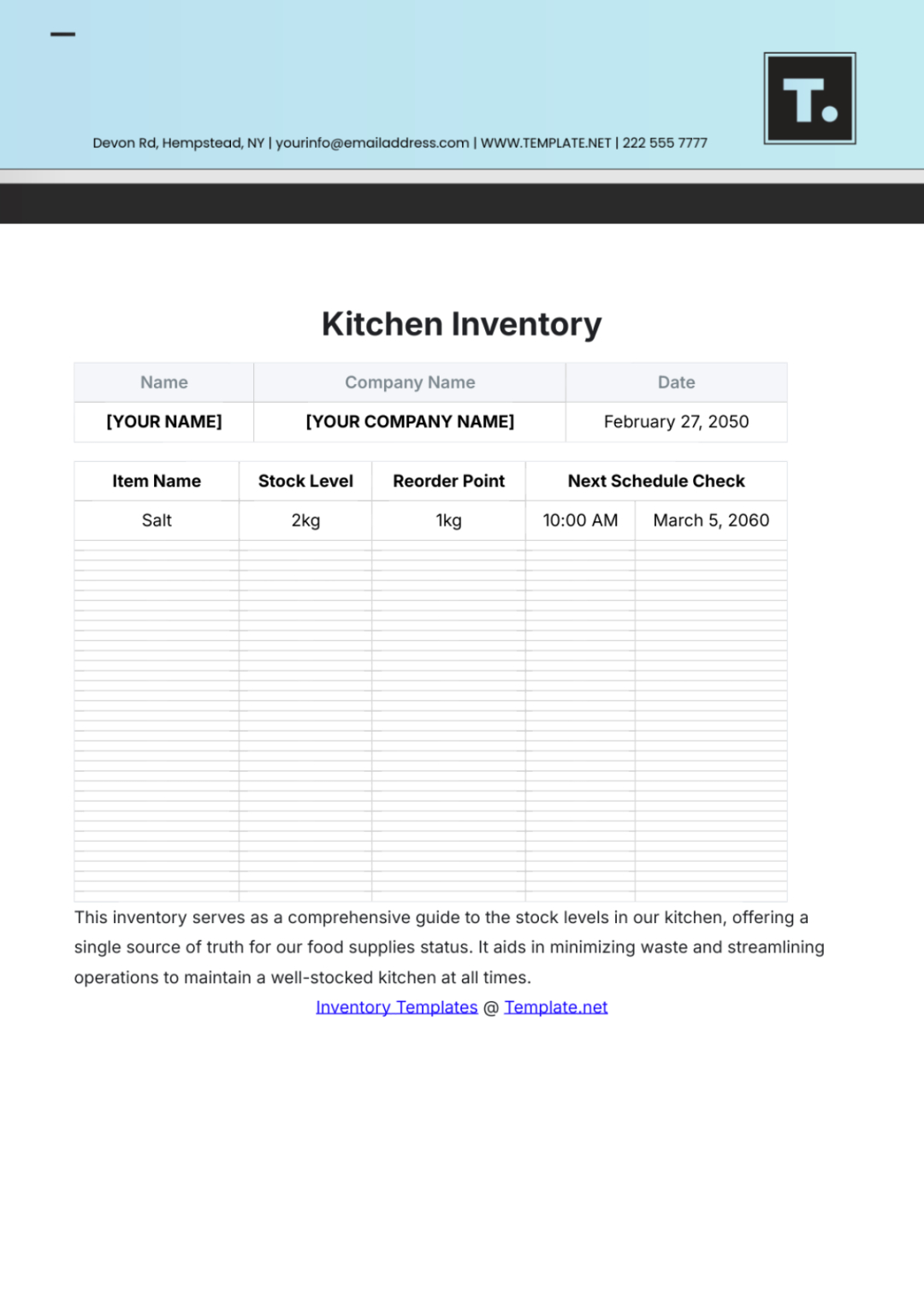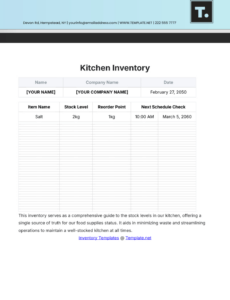Free monthly inventory report template to edit online kitchen equipment inventory list template -Have you ever noticed yourself staring at a blank screen, arranging your plans, projects, or even just your grocery list? We’ve all been there. Sometimes, the most difficult step of any activity is just taking the first step. That’s where the power of a structured checklist comes in. Consider it a ready-to-use structure, a helping hand that guides you from chaos to clarity.
Consider a structured checklist as a blueprint. It gives you the basic structure and formatting you want, so you can concentrate on filling in the necessary information aligned with your needs. No more messing around with formatting, text styles, or trying to find the best arrangement. A good list template eliminates the hassle.
Through this discussion, we will dive into the useful domain of structured formats, learning ways they streamline different parts of your personal and professional tasks. We’ll analyze the various categories of structured lists and highlight sources offering great resources. Ready to say goodbye to formatting struggles and harness structured planning? Let’s dive in.
The benefits of using a structured format are varied and significant. Most importantly, they drastically reduce the hours you spend structuring a checklist. Instead of creating a format yourself, you can quickly access a ready-made format and modify it to align with your requirements. This is highly beneficial if you frequently create ongoing structured plans, such as scheduled food planning or packing lists.
Additionally, pre-designed formats help to improve consistency and organization. By following a standard format for your lists, you can guarantee that all the critical data is captured and organized in a clear, well-arranged format. This can be especially useful for group tasks, where it’s necessary to have consistent communication. Structured frameworks also minimize errors. When you are adhering to a structured checklist, it is highly unlikely that crucial details is forgotten.
Beyond productivity, list templates also minimize anxiety. There’s something incredibly calming about seeing everything you need to do in a organized, systematic format. It eliminates the nagging feeling that something might slip through the cracks and allows you to handle your workload with a greater focus. This is particularly beneficial during busy periods when many responsibilities are competing for your attention and obligations.
Structured task formats are also extremely flexible. They can be applied to a wide range of purposes, from managing everyday responsibilities to planning a complex marketing campaign. The key is to find a pre-built checklist that fits your unique goals and then modify it to work with your unique style. There are structured organizers designed for task delegation, goal setting, grocery shopping, vacation planning, and many additional applications. The ways to utilize them are limitless.
Finally, don’t underestimate the impact of list templates for creative endeavors. They can be applied in concept creation, outlining writing projects, organizing trips, or even creating meal plans. By delivering a framework for your planning process, structured organizers can help you overcome creative stagnation, stay organized while traveling, and structure balanced diets.
Start by identifying the category of structured format you need. Are you looking for a daily to-do list to monitor your everyday activities? Or are you organizing a larger project, like a celebration or a digital campaign? Defining the extent and objective of your list will help you filter your possibilities and select a pre-designed checklist that’s optimized for that category of responsibility.
Another excellent resource is online template libraries. Resources including design-focused sites, Template.net, and Smartsheet offer a large selection of high-quality templates for a variety of functions. These templates often feature advanced features and adjustable layouts, enabling you to create professionally structured and efficient checklists. Many of these sites feature both cost-free and paid designs, so you can select the alternative that aligns with your financial plans and preferences.
The next step, consider the layout and design of your checklist. What method will the information be formatted clearly? Would it be best to choose columns, rows, or a unstructured format? Reflect on the flow of information and ways to optimize to be as easy to use as possible. Utilize distinct sections, consistent formatting, and proper spacing to enhance clarity.
Be open to test different options with various structured checklists to locate the ones that suit you most. Consider acquiring a selection of formats and modifying them to identify what works best. Evaluate the elements that are most important to you, such as user-friendly interface, editing capabilities, and integration with your existing software. It is always a good idea to try multiple templates for a given use.
Ultimately, the greatest approach to truly appreciate the value of these tools is to put them into practice. Locate a Free List Template, customize the layout, and integrate it into your everyday workflow. The impact might just leave you impressed. The power of list templates is their adaptability. They are structured guides designed for customization, meant to change from simple outlines into highly efficient resources for meeting your objectives. Utilizing this organizational method can unlock enhanced dimensions of focus and effectiveness, creating a better structured and fulfilling daily routine.

